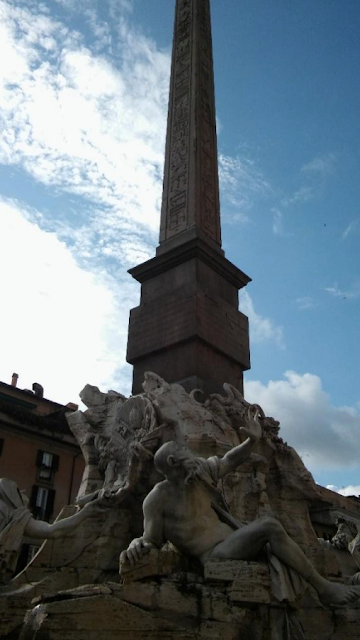Rome: A City of Echoes
July 11, 2016

The morning sun is shining, but has yet to come up over the set of quaint old apartments surrounding a cobblestone piazza. In the center of the piazza stands a massive Egyptian obelisk fixed atop a fountain. The massive weight of the obelisk is masked by four graceful white marble figures, arranged in the fountain to support the weight. A Baroque-era church to the right domineeringly pushes into the piazza, dwarfing the graceful fountain and obelisk.
Around the rest of the piazza, restaurant owners set tables, street artists draw portraits or sell prints, and Italian military casually guard the church’s entrance. In a seeming contrast with the rest of the simple and historic scene, an entire building under renovations is covered with an advertisement for Pandora jewelry. Buried beneath this modern scene is the ancient Roman stadium of Domitian. Welcome to Piazza Navona in Rome, Italy, as seen through the eyes of the Museum of World Treasures’ Education staff member Kristin Martin during her vacation and visit to Rome.
The fountain mentioned is Fontana dei Quattro Fiumi (The Fountain of the Four Rivers), carved by Baroque architect Bernini with figures to represent the Nile, the Danube, the Ganges, and the Rio de la Plata. The Rio de la Plata figure cowers away from the imposing façade of Sant'Agnese in Agone, designed by Bernini’s contemporary and rival, Borromini. Inside the church are relics of the Christian martyr Agnes who, according to pious tradition, was killed in the stadium directly beneath the piazza.
Out of all of the things Martin saw in Rome, she describes Piazza Navona as a perfect example of the overwhelming and often clashing and chaotic mix of history, religion, culture, and art that makes Rome a historical stronghold. “Just as one must learn to appreciate noodles, tomato sauce, and cheese to truly enjoy a good lasagna, one must learn to appreciate each layer of culture, history, and art to appreciate Rome, or any history for that matter, for what it is. If you do not take the Roman lasagna as a whole, you’ll miss out on the full enjoyment of it!” says Martin playfully.
|
|
|
Rio de la Plata Figure on the Fontana dei Quattro Fiumi |
Here at the Museum, we often talk about becoming global citizens by appreciating slices of history. Throughout this trip, Martin states she was particularly inspired by this vision and the opportunity of expanding her understanding of Roman history and the Museum’s Roman collections. Martin says that she looks forward to infusing the atmosphere and history she experienced in Rome into Museum programming and exhibits so that she can share the joy of Rome with all visitors!
Come to the Museum next week at 9:00 a.m. on Thursday, July 21 for our Coffee with the Curator to hear Martin speak of her experience!